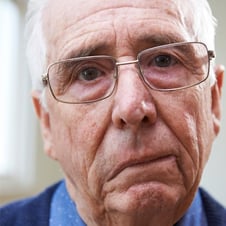 Dysarthria is a motor speech disorder caused by damage to the central or peripheral nervous system – or sometimes both – as the result of a stroke or brain injury. People with dysarthria may have trouble with respiration (breathing), phonation (voicing), articulation (speech), prosody (patterns of stress and intonation) and resonance (e.g., nasality).
Dysarthria is a motor speech disorder caused by damage to the central or peripheral nervous system – or sometimes both – as the result of a stroke or brain injury. People with dysarthria may have trouble with respiration (breathing), phonation (voicing), articulation (speech), prosody (patterns of stress and intonation) and resonance (e.g., nasality).
Stroke survivors may also experience slurred speech and difficulty chewing and swallowing since the same muscles needed to speak are also used to eat and drink. Most likely, you will also notice that one side of their face and body is weakened as a result of the stroke.
There are seven types of dysarthria: Flaccid, Spastic, Ataxic, Hypokinetic, Hyperkinetic, Unilateral Upper Motor Neuron, and Mixed. Each has their respective causes and features that result in a different pattern of impairment in muscle control while speaking. For example, hypokinetic dysarthria is often a result of Parkinson’s disease due to a lesion in the substantia nigra region of the brain. However, it can also result from anti-psychotic medications or frequent blows to the head. Other causes of dysarthria include traumatic brain injury, brain tumors, Amyotrophic Lateral Sclerosis (or ALS), Huntington's Disease, Multiple Sclerosis, Cerebral Palsy, and Muscular Dystrophy.
A Speech-Language Pathologist can help individuals with dysarthria communicate more clearly. Some techniques that may be beneficial include using a slower rate of speech and exaggerating the movements of the lips and tongue. Some people may need other forms of communication, such as gestures, writing, or using phones or computers with text-to-speech capabilities.
Northeast Ohio Adults Communicating Together (NEO-ACT) is a one-of-a-kind program developed by Cleveland Hearing & Speech Center for adults with communication disorders related to stroke, injury or illness. The program is designed to provide individuals with communication difficulties (and their caregivers) an opportunity to improve quality of life through participation in activities that provide enrichment for listening, speaking, reading, writing, and socialization.
If you or someone you know experiences sudden slurred speech, this may be an indication of a stroke and it is crucial to seek medical assistance as soon as possible.
Remember the Acronym FAST:
F.A.S.T. is an easy way to remember and identify the most common symptoms of a stroke. Recognition of stroke and rapidly getting to a hospital will more likely lead to a better recovery.
- Face – Ask the person to smile; if one side of the face is crooked or drooping, the person may be having a stroke.
- Arms – Ask the person to lift both arms; if the person has difficulty raising one arm, the person may be having a stroke.
- Speech – Ask the person to talk; if there is slurred speech or the person is unable to speak, he/she may be having a stroke.
- Time – If the person is having any of the signs noted above, call 9-1-1 immediately. Time is crucial in stroke treatment and recovery.
If you are the caregiver of a stroke survivor, visit our blog Daily Victories to receive content and ideas for those at home recovering from a stroke.









